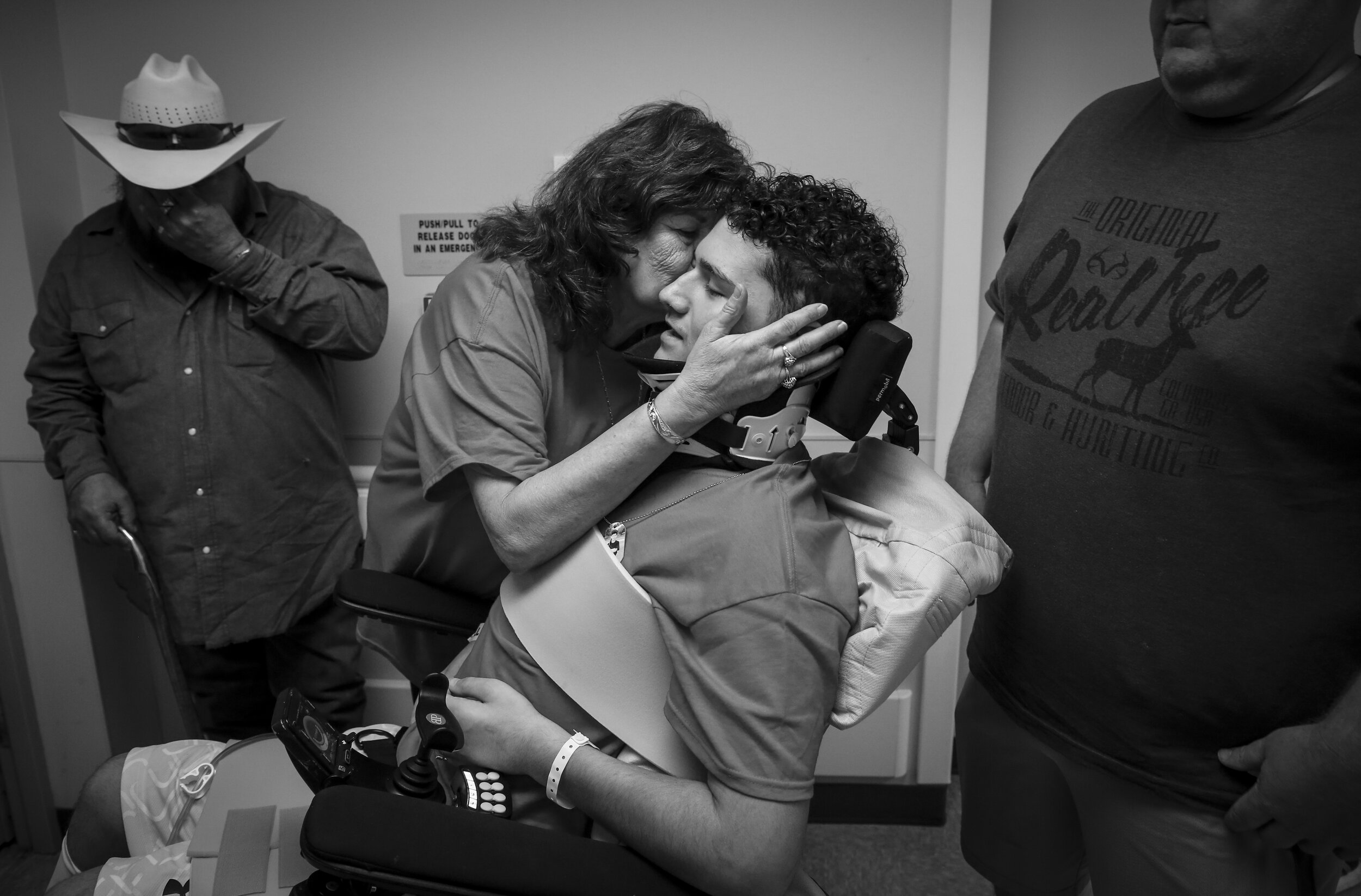
The Houston area is the most dangerous major metro area in the country for drivers, passengers and those in their path.
David Jospeh Anzaldua, better known as D.J., is kissed by his grandmother, Hilda Anzaldua, as he is being released from Memorial Hermann Hospital Thursday, July 19, 2018. Anzaldua, 19, fell asleep while driving his blue Chevy Silverado home in Jewett, Texas. The crash caused a C4 spinal cord injury that left him paralyzed chest down.
Motor vehicle crashes, from the routine fender benders, which happen every 80 seconds across the Lone Star, to the serious injury accidents such as Anzaldua’s, cost Texans billions in medical bills, roadway repairs and emergency response.

Julie Jackson uses a portable lift machine to move D.J. from his bed onto his wheelchair in her home in Crosby, Texas. D.J. sleeps in what used to be Julie's husband’s man cave.
In the eight months since Anzaldua crashed into that tree, his medical and rehabilitation expenses have topped $1.1 million.
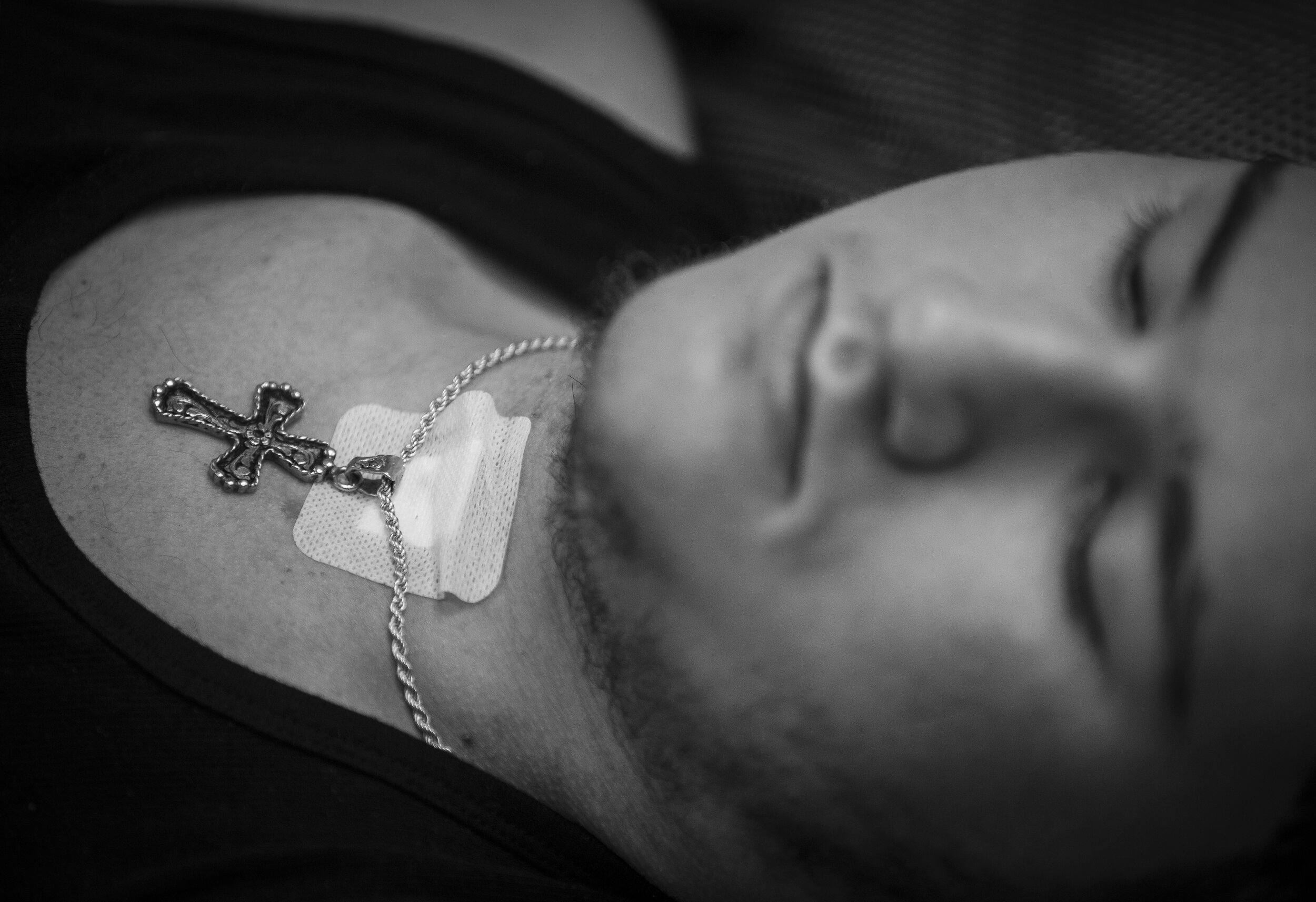
D.J. waits for his physical therapy session to begin at TIRR Memorial Herman Outpatient Rehabilitation in Houston. The injury has transformed the life of a former football player and a teenager looking to play baseball at community college.
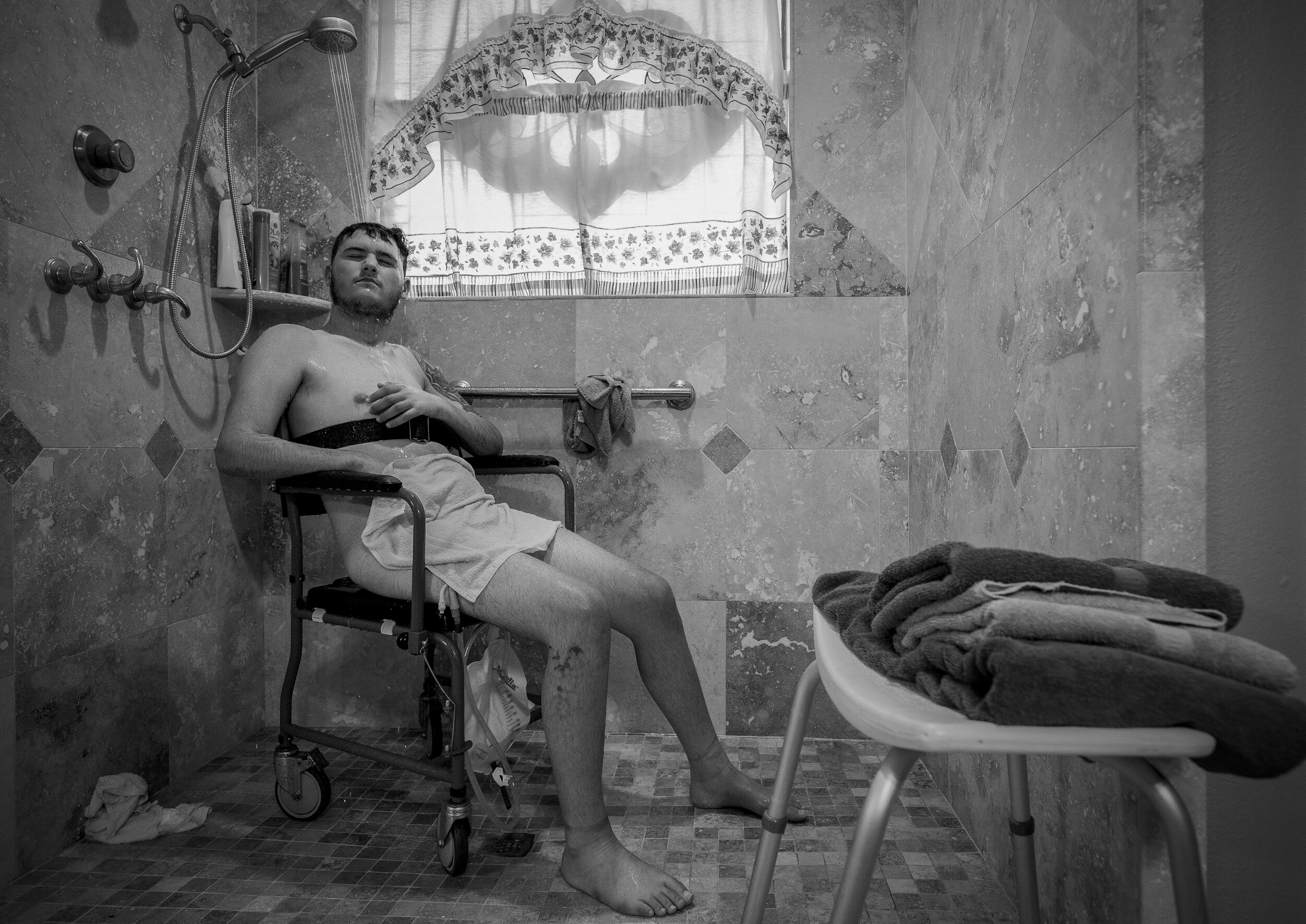
D.J. spends some extra time under the running water at the end of his shower. When Kristin asked if he was done with his shower and ready to be dried, he replied "just a little longer."
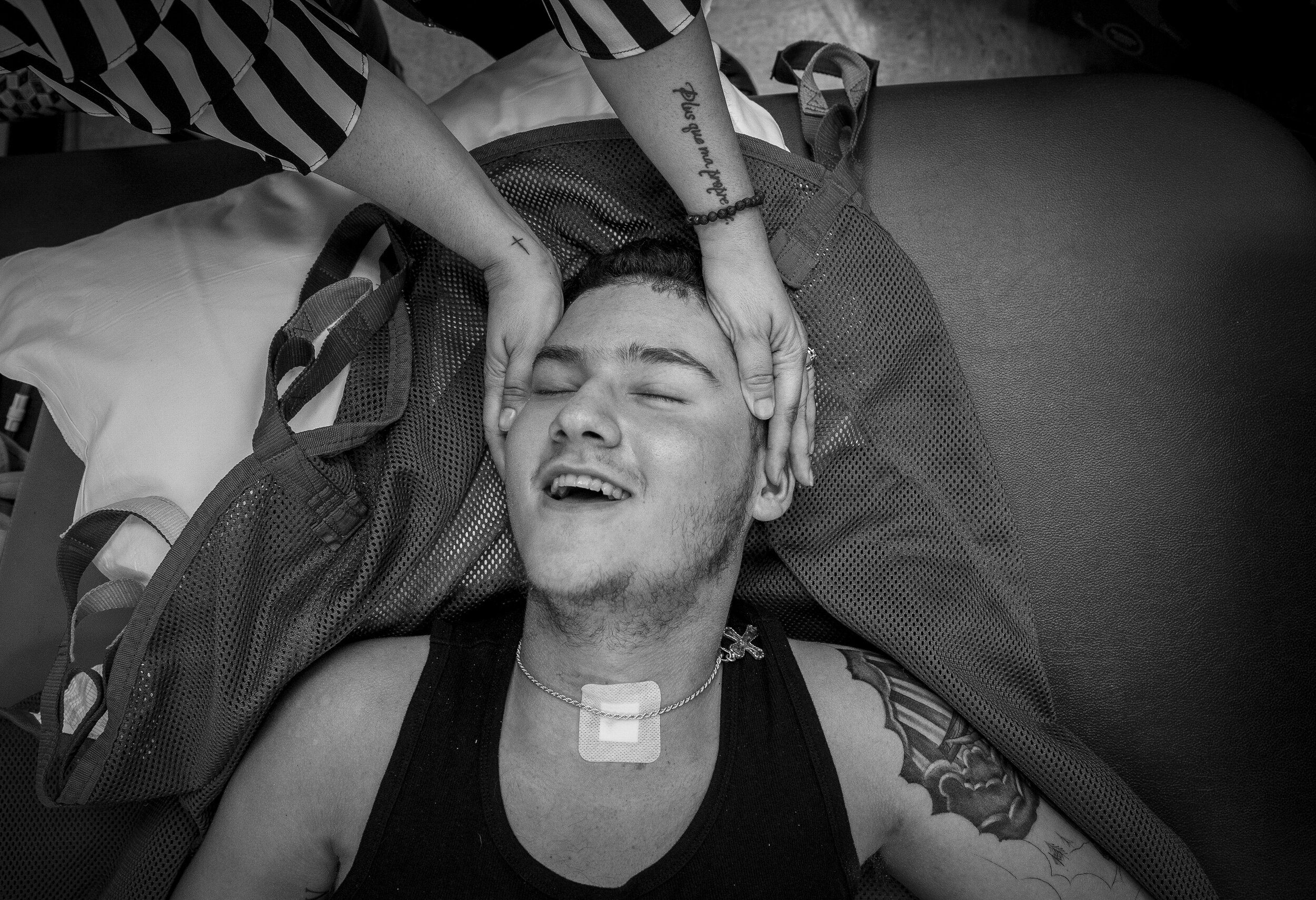
D.J. smiles as Julie holds his head after physical therapists finish measuring the mobility in his arms and shoulders at TIRR Memorial Hermann Outpatient Rehabilitation in Houston.
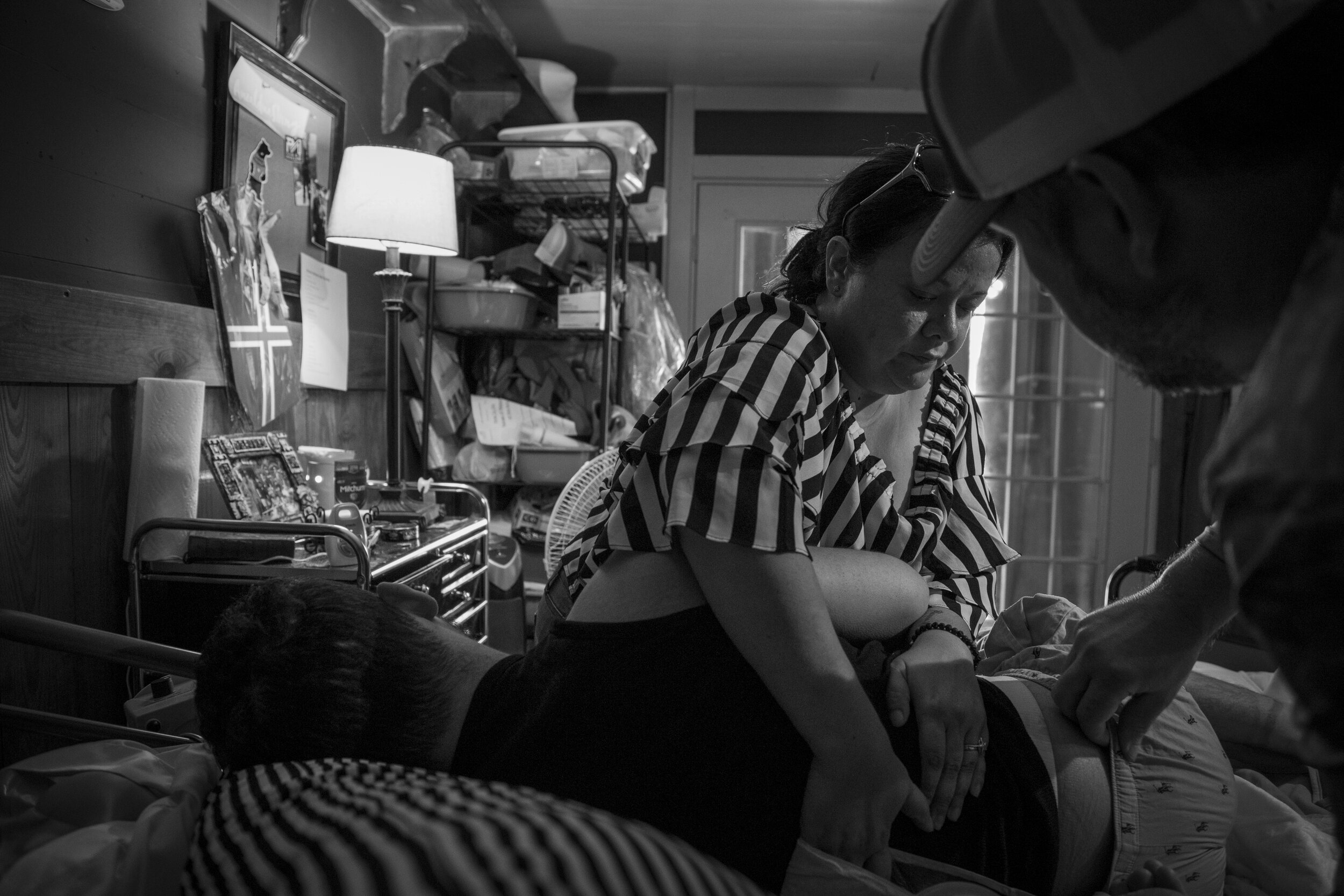
Julie Jackson, center, helps D.J., bottom, get dressed before driving 30 miles south from Crosby, Texas to Houston for a physical therapy session.
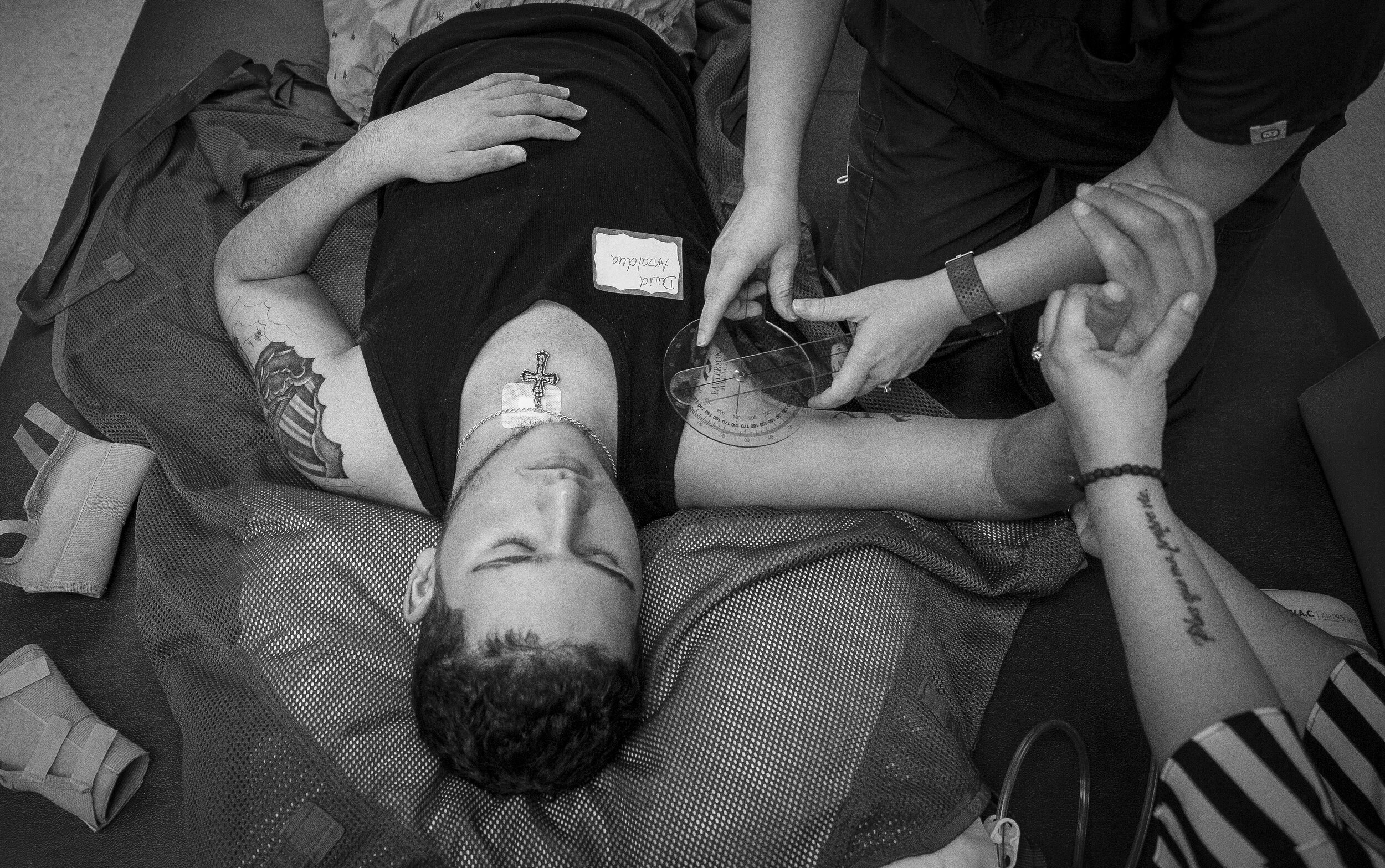
A physical therapist measures D.J.'s mobility on his right arm during a session at TIRR Memorial Hermann Outpatient Rehabilitation in Houston.
As Anzaldua’s crash shows, the far larger and costlier effects from crashes are medical bills that mount for serious injuries. Nationally, of the $1.14 million direct cost for crashes involving severe injury, $837, 182, or more than 73 percent, is from medical bills and lost wages.
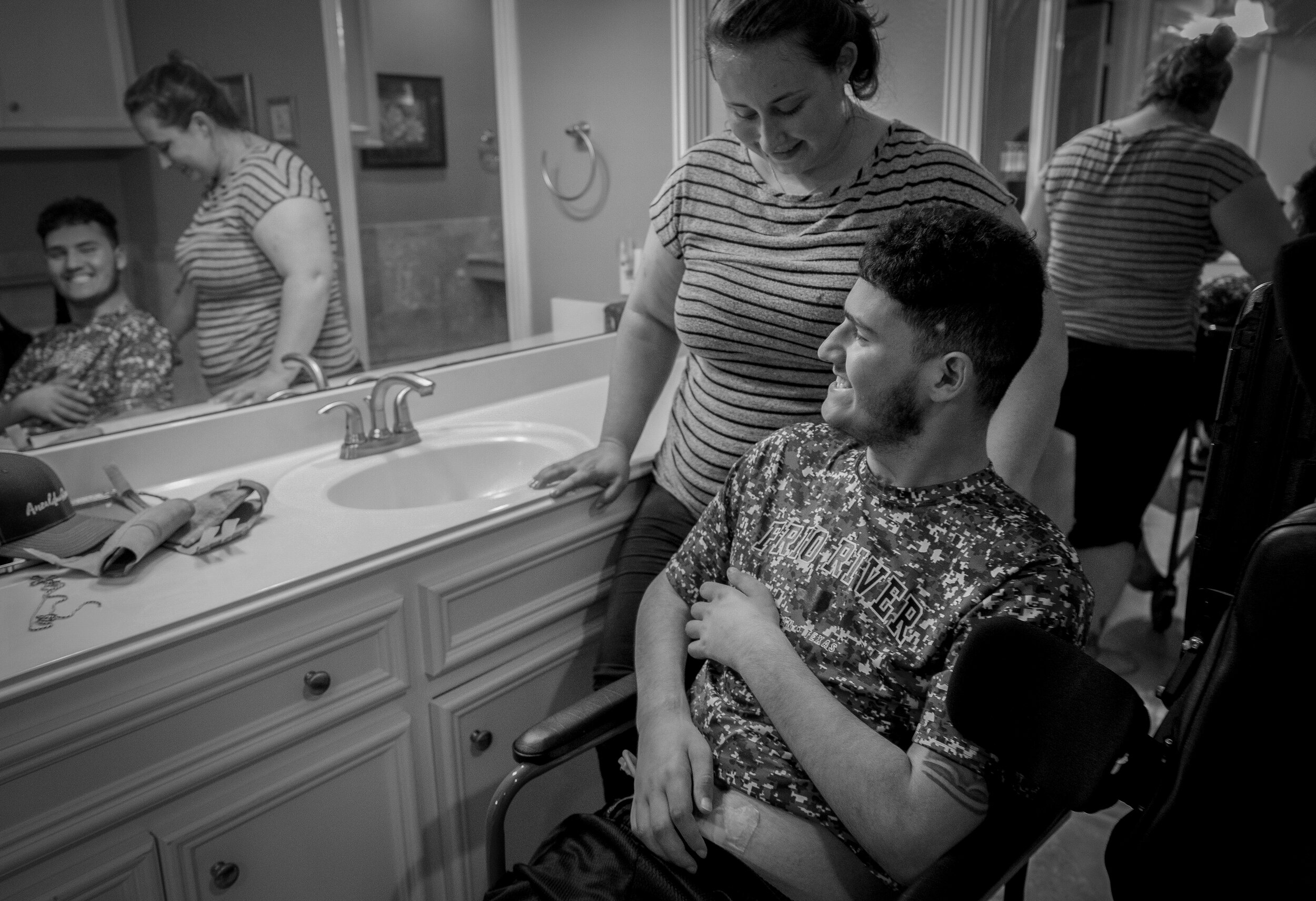
D.J. smiles looks at himself in the mirror after taking a shower and getting dressed.
"I started thanking God for the little things," he said. "I'm alive, I'm here."








The Houston area is the most dangerous major metro area in the country for drivers, passengers and those in their path.
David Jospeh Anzaldua, better known as D.J., is kissed by his grandmother, Hilda Anzaldua, as he is being released from Memorial Hermann Hospital Thursday, July 19, 2018. Anzaldua, 19, fell asleep while driving his blue Chevy Silverado home in Jewett, Texas. The crash caused a C4 spinal cord injury that left him paralyzed chest down.
Motor vehicle crashes, from the routine fender benders, which happen every 80 seconds across the Lone Star, to the serious injury accidents such as Anzaldua’s, cost Texans billions in medical bills, roadway repairs and emergency response.
Julie Jackson uses a portable lift machine to move D.J. from his bed onto his wheelchair in her home in Crosby, Texas. D.J. sleeps in what used to be Julie's husband’s man cave.
In the eight months since Anzaldua crashed into that tree, his medical and rehabilitation expenses have topped $1.1 million.
D.J. waits for his physical therapy session to begin at TIRR Memorial Herman Outpatient Rehabilitation in Houston. The injury has transformed the life of a former football player and a teenager looking to play baseball at community college.
D.J. spends some extra time under the running water at the end of his shower. When Kristin asked if he was done with his shower and ready to be dried, he replied "just a little longer."
D.J. smiles as Julie holds his head after physical therapists finish measuring the mobility in his arms and shoulders at TIRR Memorial Hermann Outpatient Rehabilitation in Houston.
Julie Jackson, center, helps D.J., bottom, get dressed before driving 30 miles south from Crosby, Texas to Houston for a physical therapy session.
A physical therapist measures D.J.'s mobility on his right arm during a session at TIRR Memorial Hermann Outpatient Rehabilitation in Houston.
As Anzaldua’s crash shows, the far larger and costlier effects from crashes are medical bills that mount for serious injuries. Nationally, of the $1.14 million direct cost for crashes involving severe injury, $837, 182, or more than 73 percent, is from medical bills and lost wages.
D.J. smiles looks at himself in the mirror after taking a shower and getting dressed.
"I started thanking God for the little things," he said. "I'm alive, I'm here."